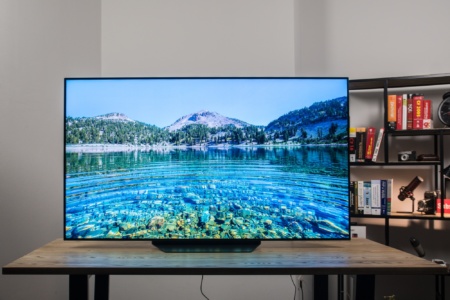
LG’s family of ultra-slim premium OLED TVs is getting another update this year. A year ago, we reviewed the flagship LG OLED TV W8 (Wallpaper TV), this time we decided to take a closer look at the most affordable model in the current line, B9.
Message from the editor: Our defenders from the 115th brigade, which is now fighting in the east, need a pickup truck . Details for transferring funds to a monobank card – Polyanskaya Karine Sergeevna, card number 5375414101372265. We ask you to take part in the fundraising.
Glory to Ukraine!
LG OLED65B9PLA design
Like previous models, the LG OLED65B9PLA is primarily striking in its thickness – it is ~ 4 mm over the entire screen area, so it is not easy to see this TV in profile from a certain distance. The electronics box adds another 4 cm to the bottom, and it also houses a VESA-compatible mount (200×300) for mounting the TV on the wall.
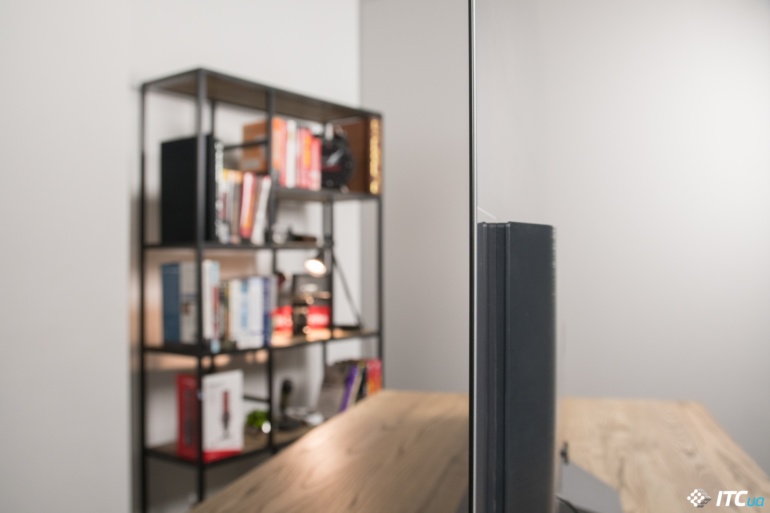
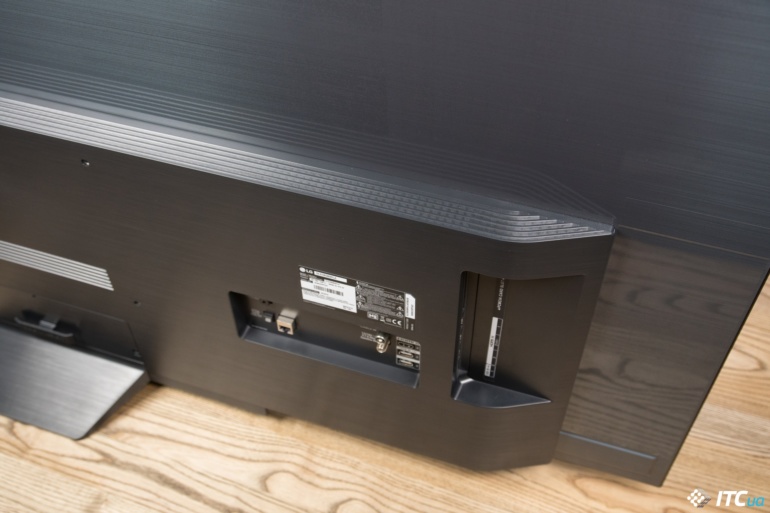
Around the protective glass that covers the screen, there is a very thin, only a couple of millimeters thick, metal frame. After turning it on, it becomes noticeable that there is still a small indent around the screen under the glass – as a result, the image is in a modest frame about 9 mm thick; on a diagonal of 65 inches, this is practically not felt.
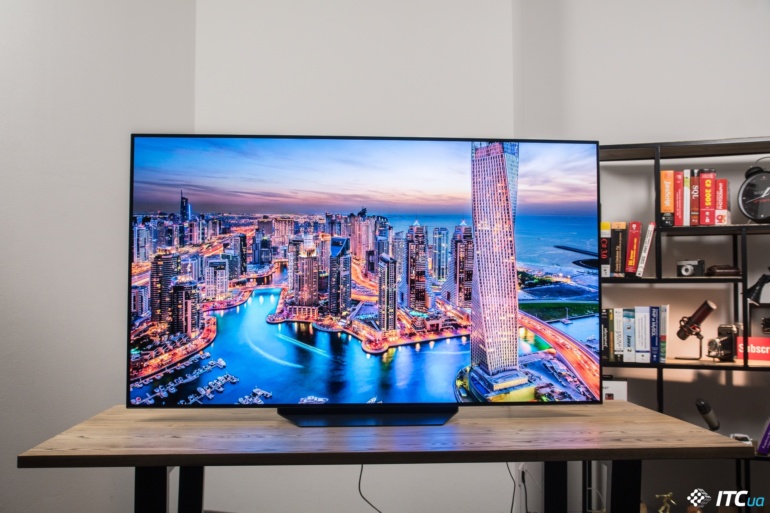
The TV is not standing on legs, as is often the case lately, but on a thin base (a plastic case with a brushed metal texture). The space occupied by it is quite small, as for such a screen diagonal – about 50×25 cm, so if you wish, this TV can even be placed on a small bedside table. For more accurate cable routing, you can use a bracket that is attached to a decorative cover that covers the attachment points of the stand to the screen.
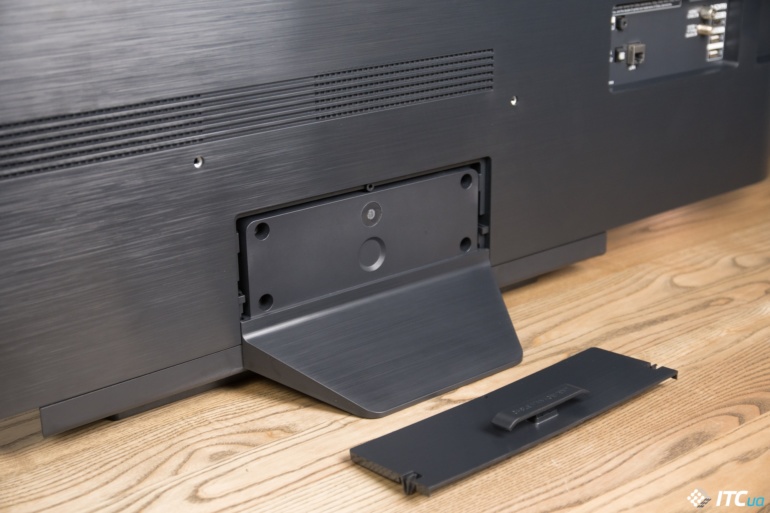
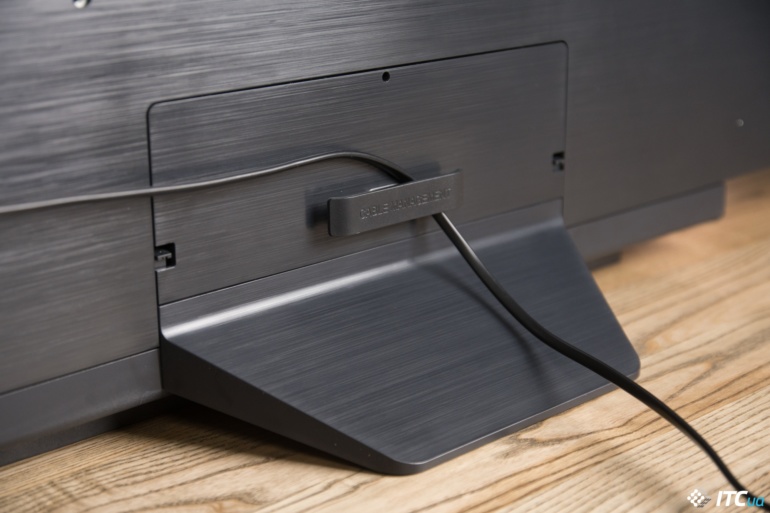
All connectors are concentrated in two blocks, one oriented sideways, the other back. There are 4 HDMI 2.0 inputs for connecting external signal sources. The TV can be connected to the home network either via cable (Ethernet connector) or via Wi-Fi (802.11.ac standard is supported). 3 USB 2.0 ports are designed to connect external drives and other peripherals. There is also a slot for connecting a conditional access module that decodes paid channels, and two audio outputs (digital and headphone).
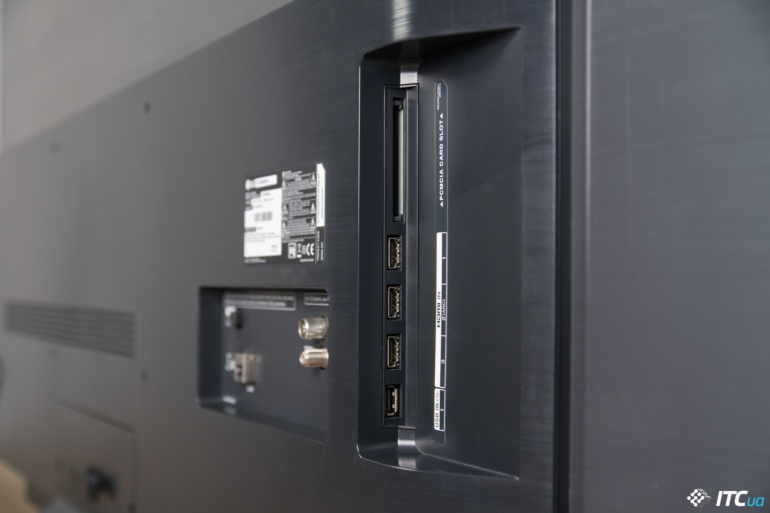
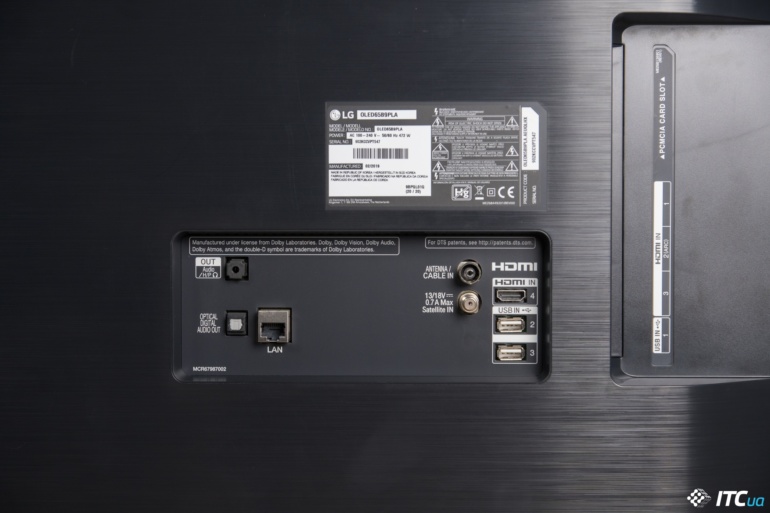
Remote control
The TV comes with an LG Magic Remote. It is relatively small, ergonomically shaped and fits well in the hand. As with previous models, the center of the four-way joystick is not a button, but a scroll wheel (which also works by pressing) – with its help it is convenient to work with the proprietary webOS operating system. The remote control is gyroscopic, so you can navigate through the menu either using the arrows around the wheel, or simply with gestures in the air. In addition, LG Magic Remote supports voice input.
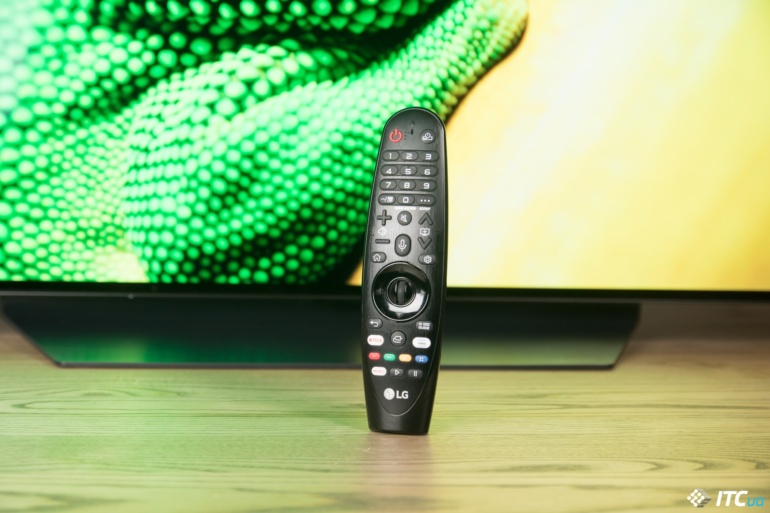
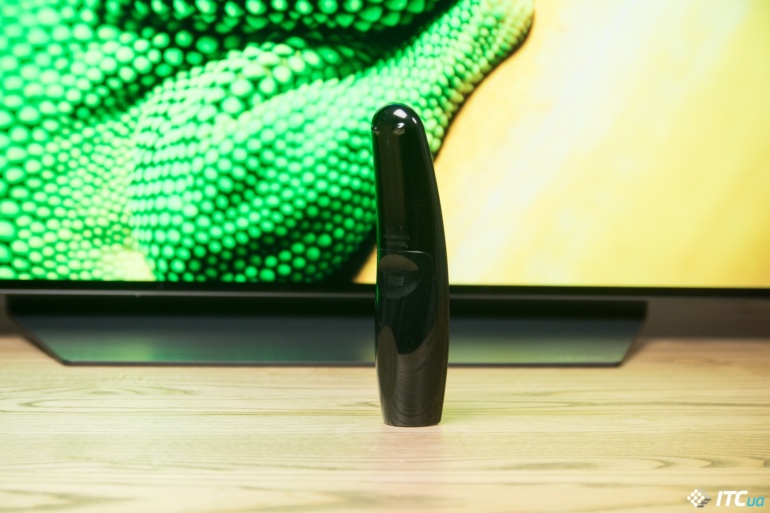
Platform, operating system
Depending on the region, the LG OLED TV B9 model can be available in different diagonals, two are officially supplied to Ukraine – 55 and 65 inches, we have an older version in our review. The B9 is the most affordable model in the current line of OLED TVs from this company, and for the sake of an attractive price, the manufacturer had to make a certain compromise – so, unlike the more expensive models of 2019, which received the second generation Alpha 9 processor, the B9 uses the second generation Alpha 7 generation (α7 Gen 2) – it differs from the “nine”, in particular, by supporting only SDR video in the [email protected] Hz mode.
Traditionally for LG TVs, a proprietary webOS shell is used as Smart TV. It has a very simple and user-friendly interface with quick access to everything you need. The main screen is called up by pressing the Home button on the remote control, after which the main menu is displayed over the current image – with a ribbon of the most requested functions (calling TV channels, installed applications, switching to the last video source, user manual, etc.). WebOS is a multitasking OS, so running applications continue to idle when switching to another task. As with last year’s lineup, the new TVs use ThinQ’s proprietary artificial intelligence system with support for Google Assistant and Alexa, which is used to better recognize voice commands (launching applications, switching between channels, changing volume, etc.), as well as for search queries on the Internet and Youtube.
The TV can be used to control your smart home using the Dashboard app. It can quickly switch to any available content source, as well as control other devices – and if you install the LG ThinQ application on your smartphone, you can use it as a remote control for the entire smart home, and this TV in particular.
The webOS interface has changed a bit compared to what we saw in last year’s model: for example, the left panel disappeared, leaving only the bottom ribbon, which also “moved” the search icons, the smart home control panel and the launch of the branded application “LG Channels”. Created in partnership with MEGOGO, it is a kind of “TV online”, which offers a selection of more than two hundred TV channels, as well as films and series. The basic package is free, a subscription is required for full access (as part of the promo, a subscription for 6 months is available for both “LG channels” and MEGOGO).
In addition to LG ThinQ, LG OLED65B9PLA can be controlled using a smartphone using another mobile application – LG TV Plus. It not only acts as a virtual remote control, but also offers additional functionality, including sending content to the TV screen from a smartphone.
By the way, after installing LG TV Plus, the user gets access to the contents of the smartphone from the TV itself – its icon appears in the “Home Control Panel”. For Apple devices, it’s even easier – the TV supports AirPlay 2 and Home Kit, so you don’t need to install anything extra in this case.
Sound LG OLED65B9PLA
Like the older C9 model, the LG OLED TV B9 uses a 2.2 speaker system with a total power of 40 watts (20 watts each for satellites and woofers) – this is twice as powerful as last year’s B8. Acoustics supports Dolby Atmos virtual surround sound technology, which allows you to simulate surround sound on the built-in speakers. Thanks to this, the LG OLED65B9PLA acoustics sound good, the sound is rich and quite “bass”, with good detail, and much better and more voluminous compared to the sound of TVs with traditional speakers.
Image quality
We note right away that the image quality in photographs with a TV screen, including depends on the settings of your screen , so you should not draw any conclusions solely from the pictures.
The LG OLED65B9PLA uses a proprietary 10-bit OLED panel with a refresh rate of 120Hz, a resolution of 3840×2160 pixels and a diagonal of 65″. It supports all major HDR standards – HDR10, Dolby Vision and Hybrid Log-Gamma (HLG).
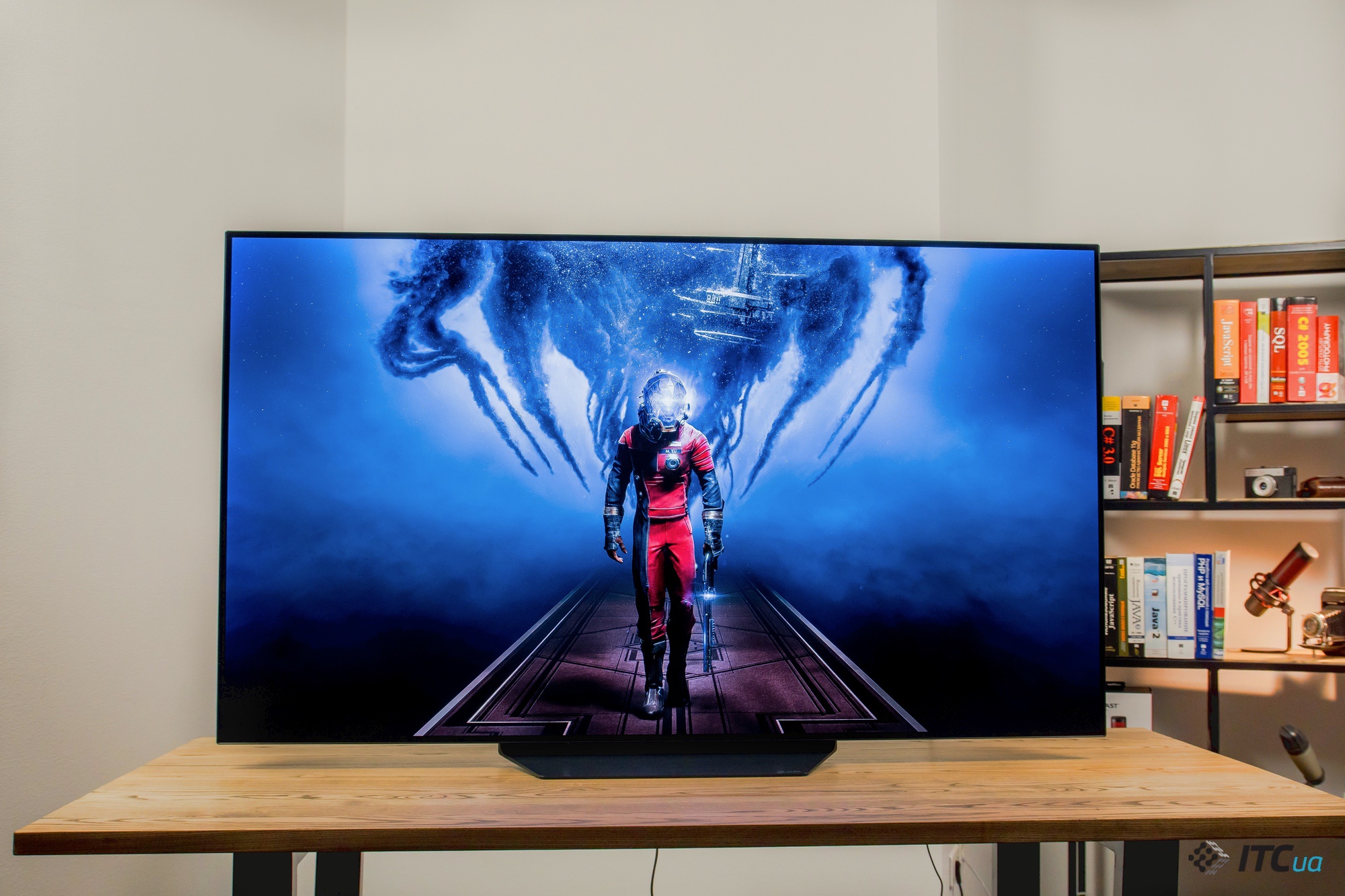
The picture on an OLED screen invariably makes a strong impression – such deep blacks cannot be achieved on ordinary LCD screens, regardless of the type of matrix, because OLED does not have additional backlighting, the pixels glow by themselves, and “black” here actually means ” black”, without the slightest hint of gray. Because of this, an OLED TV is ideal for watching movies in a dark room, where scenes of, for example, the absolute blackness of infinite space look the most spectacular.
Another difference from traditional LCDs that immediately catches the eye is the maximum viewing angles. Even when viewed from the side, when the entire screen shrinks to a narrow strip, the brightness and color saturation remain almost the same as when you are right in front of the screen.
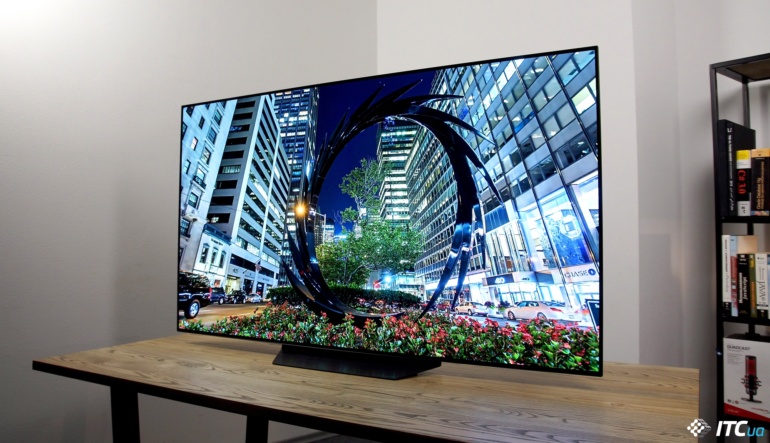
This panel uses a variant of the WRGB matrix, with an additional white pixel – this allows for more accurate color reproduction of light tones and a noticeable increase in maximum brightness. As you know, for OLED panels, this parameter depends on the overall brightness of the image – the more white in the frame, the lower the brightness of the entire screen. Thus, with 100% white fill, the maximum brightness in SDR mode is about 180 cd / m², at 50% – 300, at 10% – 400. For some video modes, by the way, the parameter ” Peak Brightness”, which allows you to adjust the degree of change in brightness due to its reduction in dark scenes.
In addition to traditional video modes like Vivid, Standard or Sports, there are also three “expert” modes: one developed in collaboration with Technicolor and two more certified by the ISF (Imaging Science Foundation) – for a dark room and a room with bright background lighting. They offer well-balanced options for watching movies, so that any of these three modes can be used with default settings, without long and tedious tweaks. Game mode greatly reduces input lag, allowing you to use this TV as a gaming monitor as well.
In all movie modes except “ISF Expert – Vivid Lighting”, the color gamut is limited to sRGB space, resulting in calm, natural colors; in the normal Cinema mode, the gamma curve is almost perfect at the standard value of 2.2, and the color temperature is 6500K.
In the Technicolor mode, the gamma is increased to ~2.3, the temperature is also slightly above the standard, at the level of 7000K – this gives a slightly richer and colder picture compared to the previous mode. ISF Expert modes differ from each other in brightness and color gamut – for a dark room, a standard, limited to sRGB, is offered, while for bright background lighting – full gamut, which almost completely covers the DCI-P3 space; in this case, the TV shows very rich, saturated colors – the OLED panel shows everything that it is capable of.
To simulate the HDR effect on regular SDR content, there is an HDR Effect mode here – it makes the picture brighter and more saturated, while treating the image more carefully than the Vivid mode, so if you choose between these two for faded content, we would advise use the first one.

True HDR has a peak brightness of 600 cd/m², and in this mode the TV has its own picture patterns. The HDR effect is most pronounced in the “Vivid” and “Standard” modes, but in them it is too exaggerated. We would recommend using one of the other three – “Home theater”, “Cinema” or “Technicolor Expert”, in which the picture is slightly less bright and saturated, but with more accurate color reproduction and more “soft”.




